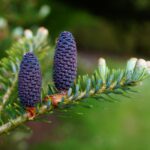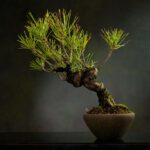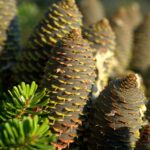Can You Burn Bradford Pear Wood? Everything You Need to Know
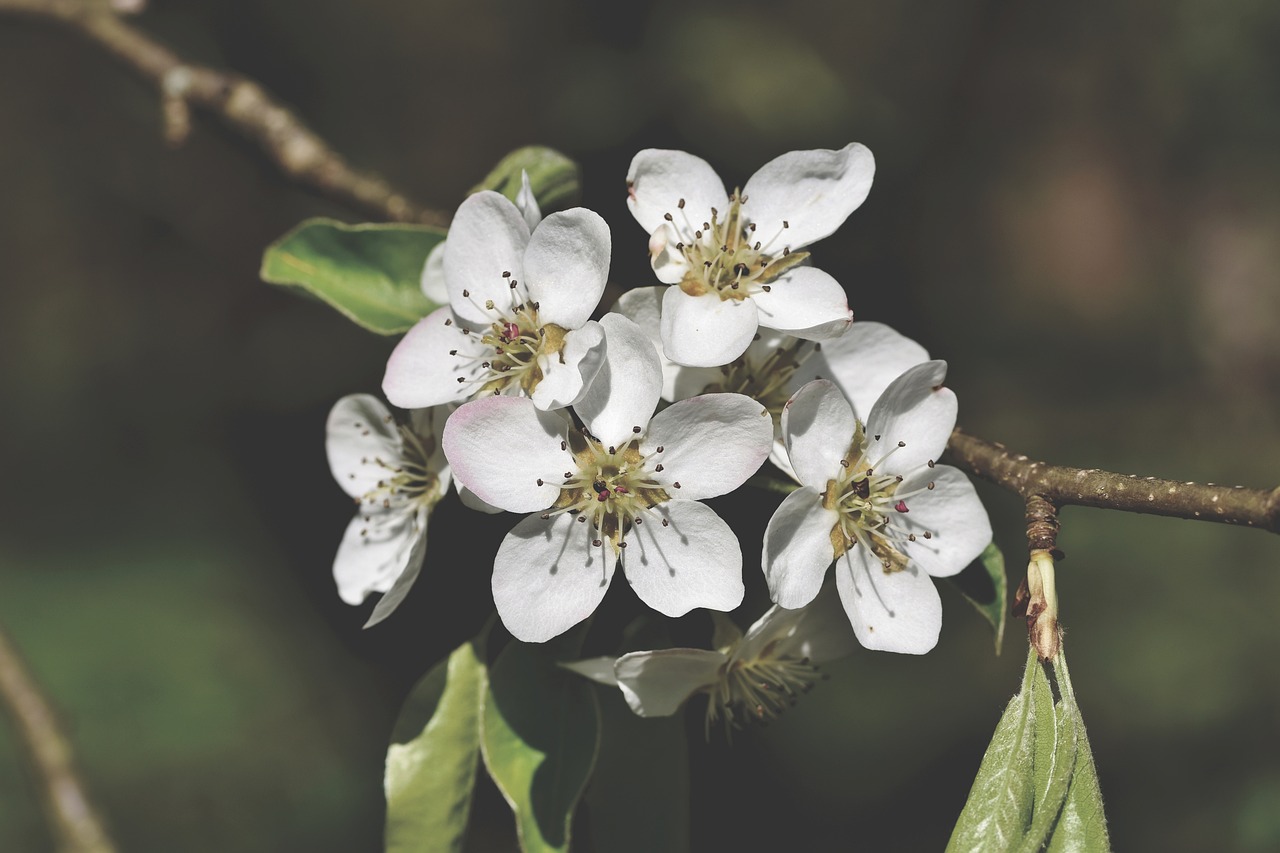
So, you’ve got some Bradford Pear wood, maybe from a storm or just clearing out your yard, and you’re wondering, “Can I burn this stuff?” It’s a pretty common question, especially since these trees are everywhere. We’re going to dig into all the details about using Bradford pear wood for firewood, from how hot it burns to whether it’s okay for your smoker. Let’s find out what’s what with this wood.
Key Takeaways
- Bradford pear wood is a hardwood, pretty dense, and it burns hot.
- It seasons fairly quickly, often in less than a year, which is nice.
- You can use Bradford pear wood for heating and in fireplaces, but be aware of its fast burn.
- It’s generally not recommended for cooking or smoking because it’s not a true fruit-bearing pear tree.
- Bradford pear is an invasive species, so using its wood can help manage its spread.
What Is Bradford Pear Wood? A Quick Overview
Bradford pear trees you see them everywhere, right? They’re those trees that explode with white flowers in the spring. But what happens when one comes down, and you’re left with the wood? Is it good for anything? Let’s take a quick look.
Bradford pear wood comes from the Bradford pear tree, a cultivar of the Callery pear, known for its rapid growth and ornamental appeal. However, they’re also known for being weak and invasive. So, what about Bradford pear wood uses?
- Fast-growing ornamental tree
- Known for weak branch structure
- Considered an invasive species in many areas
Bradford pear trees are often removed due to their invasive nature and structural problems. This means there’s a lot of this wood available, often for free. But just because it’s free doesn’t automatically make it useful.
So,is Bradford pear wood good for anything? We’ll explore its properties and potential uses in the following sections.
Is Bradford Pear Wood a Hardwood or Softwood?

So, is Bradford pear wood a hardwood or softwood? This is a pretty common question when people start thinking about using it for firewood or woodworking. The answer is that Bradford pear is indeed a hardwood.
Now, don’t let the name ‘hardwood’ fool you into thinking it’s super tough like oak or hickory. The terms ‘hardwood’ and ‘softwood’ actually refer to the tree’s reproductive method, not necessarily the wood’s density. Hardwoods are angiosperms, which are flowering plants that produce seeds with a covering. Softwoods are gymnosperms, which are cone-bearing plants with naked seeds. This distinction is important in the wood-using industry, where sawmills often specialize in either hardwood or softwood processing.
Bradford pear trees, despite their ornamental nature, fall into the hardwood category. This means they share characteristics with other hardwoods, such as a generally denser structure compared to softwoods. While it might not be the absolute hardest wood out there, it’s not a softwood like pine or fir. This classification affects how it burns, how it’s worked with tools, and its potential uses.
It’s worth noting that the actual hardness of a wood species can vary. Factors like growing conditions and the specific part of the tree can influence the wood’s density and overall hardness. So, while Bradford pear is classified as a hardwood, its properties can still differ from other hardwoods you might be familiar with.
Think of it this way:
- Hardwoods: Generally denser, flowering plants, Bradford pear included.
- Softwoods: Generally less dense, cone-bearing plants.
- Density Variation: Even within hardwoods, density can vary quite a bit.
Knowing that Bradford pear is a hardwood helps set expectations for its performance as firewood and its suitability for different woodworking projects. It’s a good starting point for understanding its potential and limitations.
Bradford Pear Wood Properties: Density, Weight & Grain
Okay, so you’re thinking about using Bradford pear for firewood or maybe a small project. Let’s talk about what you can expect from this wood in terms of its physical properties. It’s not the most popular choice, but understanding its density, weight, and grain can help you decide if it’s right for your needs. I’ve got some experience with it, and here’s what I’ve found.
Density of Bradford Pear Wood
Bradford pear is generally considered a dense hardwood. This density contributes to its decent heat output when burned, but it also means it can be a bit tougher to split, especially if you’re dealing with larger pieces. The density also affects how long it takes to season properly; denser woods usually need more time to dry out. I’ve noticed that freshly cut Bradford pear feels noticeably heavier than some other common firewood types like pine or poplar.
Weight Considerations
The weight of Bradford pear wood is directly related to its density and moisture content. Green, unseasoned Bradford pear will be significantly heavier than wood that has been properly dried. This is something to keep in mind if you’re hauling it yourself. A cord of green Bradford pear can be quite a load! I remember one time I underestimated the weight and nearly threw out my back loading it into the truck. Now I always take it slow and steady.
Grain Characteristics
The grain of Bradford pear is usually pretty fine and even. This makes it relatively easy to work with if you’re using it for woodturning or small woodworking projects. The color can vary, but it’s often a light tan or blonde color, sometimes with interesting patterns. Some people find the grain aesthetically pleasing, while others might find it a bit plain compared to more exotic hardwoods. I’ve seen some pieces with really beautiful figures, though, so it’s worth taking a look before you dismiss it. The fine grain also means it can take a nice finish if you’re using it for crafts.
One thing I’ve learned is that Bradford pear can be unpredictable. Sometimes you’ll get a piece that splits easily and burns great, and other times it’ll be a knotty, twisted mess. It’s just part of the experience. But hey, free wood is free wood, right?
Here’s a quick rundown of things to consider:
- Density: High, contributing to heat output.
- Weight: Heavy, especially when green.
- Grain: Fine and even, good for woodworking.
- Color: Typically light tan or blonde.
I hope this helps you get a better handle on what to expect from Bradford Pear Wood! Remember to always prioritize safety when handling and burning any type of wood.
Burning Bradford Pear: Heat Output & BTU Comparison
Okay, so you’ve got some Bradford pear and you’re wondering how it stacks up as firewood. Let’s talk heat. It’s not the best out there, but it’s usable, especially if it’s free!
Bradford pear wood is moderately dense, which translates to a decent heat output. It’s not going to rival oak or hickory, but it’ll do better than softer woods like pine or poplar. Think of it as a middle-of-the-road option.
BTU Rating
BTU, or British Thermal Units, is how we measure the heat content of wood. Generally, hardwoods have higher BTU ratings than softwoods. While precise figures for Bradford Pear can be hard to come by, it’s estimated to be around 20 million BTUs per cord. This is a reasonable figure for a medium-density hardwood. For comparison, oak can range from 20-30 million BTUs per cord, while pine is often below 20 million. So, Bradford pear sits comfortably in the middle. If you need a heating unit’s specifications, you can find them here.
Comparison to Other Woods
To give you a better idea, here’s a quick comparison:
- Oak: Higher BTU, longer burn time, harder to split. A top-tier choice.
- Maple: Similar BTU, good all-around firewood. A solid choice.
- Ash: Good BTU, easy to split, burns clean. Another good option.
- Pine: Lower BTU, fast burn, lots of smoke. Best for kindling or shoulder season fires.
Bradford pear is most similar to maple or some of the softer oaks in terms of heat output. It’s a good option if you have it available, but probably not worth seeking out specifically if you have access to higher-BTU woods.
Factors Affecting Heat Output
Keep in mind that the actual heat you get from any wood depends on a few things:
- Seasoning: Properly seasoned wood burns much hotter and cleaner. Aim for at least 6-12 months of drying time.
- Moisture Content: Wet wood wastes energy to evaporate the water, reducing heat output.
- Airflow: Proper airflow in your firebox is essential for efficient combustion.
Don’t expect Bradford pear to heat your home all winter long like a super-dense hardwood. But if you’ve got some that need to be cleared, it’s a perfectly acceptable option for shoulder-season fires or mixing with other wood to stretch your supply.
Burn Characteristics: Hot, Fast, Clean Burn
Okay, so you’ve got some Bradford pear ready to go. How’s it going to burn? Here’s the lowdown.
Bradford pear tends to burn hot and relatively fast.
Think of it this way: it’s not the longest-lasting wood, but it’ll kick out some serious heat while it’s going. Some people compare it to oak, which is a pretty good benchmark for firewood. It’s also been said that fruit trees, in general, are good for burning.
Here’s what you can expect:
- Heat Output: Decent. It’s not the hottest burning wood out there, but it’ll warm things up.
- Burn Rate: Faster than hardwoods like oak or maple. You’ll be reloading the firebox more often.
- Smoke: Should be relatively clean burning, especially if properly seasoned. Less smoke means less creosote buildup in your chimney. Make sure you have seasoned firewood before burning.
One thing to keep in mind is that Bradford Pear can be a bit unpredictable. Because of its weird grain and density, it might not burn as consistently as other woods. But overall, it’s a usable option, especially if you’ve got a free source.
So, is it the best firewood ever? Probably not. But if you’ve got Bradford pear available, it’s definitely worth burning. Just be prepared to feed the fire a bit more often.
Splitting & Seasoning Bradford Pear Wood
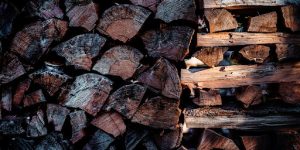
Okay, so you’ve got some Bradford Pear ready to be firewood. Now comes the fun part: splitting and seasoning. Let’s be real, this wood can be a bit of a pain, but with the right approach, you’ll be set.
Splitting Bradford Pear
Bradford pear isn’t the easiest to split. It tends to have a lot of knots and forks, which can make the process frustrating. A hydraulic splitter is your best friend here, especially if you’re dealing with larger rounds. If you’re going the manual route, here’s what I’ve found works:
- Use a maul, not just an axe. The extra weight helps.
- Aim for the outside edges first to remove smaller pieces. This can make the bigger splits easier.
- Consider using wedges if you hit a particularly stubborn knot.
Seasoning Bradford Pear Wood
Seasoning is crucial. Freshly cut wood has way too much moisture to burn efficiently. You want to get that moisture content down to around 20%.
- Stack the wood off the ground. Pallets work great for this.
- Leave plenty of space between rows for air to circulate.
- Keep the stack covered, but make sure air can still get in. A tarp over the top is perfect.
Bradford pear can take a while to season properly, usually longer than some other hardwoods. Expect to wait at least 9-12 months, maybe even longer depending on your climate. A moisture meter is a good investment to check the wood’s moisture content before you start burning it.
How Long Does it Take to Season?
Here’s a rough estimate, but remember, it depends on your local weather conditions:
| Wood Type | Seasoning Time (Months) |
| Bradford Pear | 9-12+ |
| Oak | 12-24 |
| Maple | 6-9 |
| Pine | 6 |
Best Uses: Heating, Fireplaces & Outdoor Fires
Bradford pear wood, while not the top choice for everyone, can be put to good use in various heating scenarios. It’s all about understanding its strengths and weaknesses to get the most out of it. Let’s explore where it shines.
Heating Your Home
For primary home heating, Bradford pear might not be your go-to. It doesn’t have the highest BTU output compared to denser hardwoods like oak or maple. However, it can be a decent supplemental heat source. Mixing it with other wood types can help extend burn times and provide a more consistent heat. Think of it as a good addition to your woodpile, especially if you have a lot of it readily available. Just be prepared to feed the fire more often.
Fireplaces
In a fireplace, Bradford pear wood can create a pleasant ambiance. It burns relatively cleanly, producing less smoke than some other woods, which is a plus for indoor air quality. The aroma is mild, not overpowering, making it suitable for enjoying a cozy evening by the fire. It’s also easy to split, which is always a bonus when you’re prepping for a relaxing night. If you’re looking for firewood options for your fireplace, Bradford pear is worth considering.
Outdoor Fires
For outdoor fires, like in a fire pit or for camping, Bradford pear wood works just fine. It’s easy to ignite and provides a good flame. It might not last as long as some other woods, but it’s great for shorter gatherings or when you just want a quick, easy fire. Plus, if you’re clearing out a Bradford pear tree from your property, using it for outdoor fires is a practical way to get rid of the wood.
One thing to keep in mind is that Bradford pear wood can spark a bit, so it’s always a good idea to use a screen when burning it in a fireplace or fire pit. This will help prevent any stray embers from flying out and causing a potential fire hazard.
Here’s a quick rundown:
- Heating: Supplemental heat, best mixed with other woods.
- Fireplaces: Good for ambiance, burns relatively clean.
- Outdoor Fires: Easy to ignite, suitable for shorter fires.
Cooking & Smoking: Is Bradford Pear Wood Safe?
So, can you burn Bradford Pear wood for cooking and smoking? That’s the question on many minds, especially when a tree comes down and you’re looking for ways to use the wood. Let’s get into it.
Bradford pear trees aren’t exactly known for their delicious fruit, unlike apple or cherry trees. They’re ornamental, and while they do produce small berries, they aren’t edible. This difference is important when considering them for cooking.
While some people might consider using Bradford pear wood for smoking, it’s generally not recommended. The wood isn’t known for imparting a pleasant flavor, and there are concerns about potential toxins or compounds that could be released during burning. It’s better to stick with woods known for their safe and tasty smoking qualities.
Here’s a quick rundown:
- Flavor Profile: Bradford pear wood isn’t known for its desirable flavor when burned. It lacks the sweet or savory notes that make woods like apple, hickory, or mesquite popular for smoking.
- Safety Concerns: There’s limited information on the specific compounds released when burning Bradford pear wood. It’s better to err on the side of caution and avoid using it for cooking until more is known.
- Alternatives: Plenty of other woods are proven safe and delicious for smoking. Options like apple, cherry, hickory, mesquite, and oak are readily available and offer reliable results.
Ultimately, while red oak trim might be a good choice for your home, it’s best to avoid Bradford pear wood for cooking and smoking. There are simply too many unknowns and better alternatives available.
Alternative Uses: Woodturning & Craft Projects
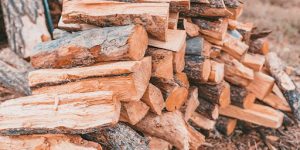
Bradford pear wood, despite its reputation as firewood, has found a niche in the world of woodworking. Its fine grain and hardness make it surprisingly suitable for various craft projects. Don’t just think of it as something to burn; consider giving it a second life as something beautiful.
One of the biggest advantages is its availability. Because they are often removed due to being invasive or damaged, finding free Bradford pear wood is easier than sourcing more traditional hardwoods. This makes it a cost-effective option for hobbyists and crafters.
Here’s a look at some alternative uses:
- Woodturning: Bradford pear is a favorite among woodturners. It turns smoothly on a lathe, producing items like bowls,kitchen utensils, and decorative objects. The wood’s density allows for intricate detailing, and it takes finishes well, revealing attractive colors.
- Small Craft Projects: Beyond turning, Bradford Pear can be used for smaller projects like knife handles, pen blanks, and small boxes. Its stability makes it ideal for items that require precision.
- Carving: While it’s a hardwood, Bradford pear isn’t excessively difficult to carve, especially when green. This makes it suitable for carving small figurines or decorative elements.
I’ve found that soaking Bradford pear wood in a dish detergent solution after turning helps with the sanding process. It’s an extra step, but it makes a big difference in the final finish.
While it might not be the first wood that comes to mind for high-end furniture, Bradford Pear offers a sustainable and accessible option for smaller woodworking endeavors. Its unique properties and easy availability make it a worthwhile choice for creative projects.
Invasive Species Insight: Pros & Cons
Okay, so Bradford pear trees. They were supposed to be this great ornamental thing, right? Beautiful white flowers in the spring, nice fall color. But things didn’t exactly go as planned. Now they’re considered a major invasive species in many parts of the US. Let’s break down why.
The Problem: Invasive Nature
The biggest issue is that Bradford pears spread like crazy. They aren’t sterile, and they cross-pollinate with other pear varieties, creating these hybrid “franken trees” that pop up everywhere. These hybrids often have nasty thorns and are super bushy, making them a pain to deal with. You’ll see them along roadsides, in fields, basically anywhere they can get a foothold. Some states, like Georgia, are even paying people to remove them, that’s how bad it’s gotten. I’ve heard that some states outlawed them and are actively trying to get rid of them.
The (Few) Pros
Honestly, the “pros” are pretty limited at this point. Here’s what I can think of:
- Fast Growth: They grow quickly, which is why they were initially popular. But that’s also part of the problem.
- Pretty Flowers: The spring blossoms are undeniably attractive, at least for a short time.
- Wood Source: Hey, you’re reading this article, so you know they can be used for firewood, even if it’s not the best.
The Cons: A Long List
- Ecological Damage: They outcompete native plants, reducing biodiversity and messing up ecosystems.
- Structural Weakness: Bradford pears have weak branch structures, making them prone to splitting and breaking in storms. This can be a safety hazard.
- Thorny Hybrids: As mentioned, the hybrids are often thorny and difficult to manage.
- Short Lifespan: They don’t live very long, often only 20-30 years, so you’re not even getting a long-term benefit.
It’s kind of ironic. These trees were brought here to make things prettier, but they ended up causing a whole bunch of problems. Now, we’re stuck dealing with the consequences. It’s a good reminder that sometimes, the things that seem like a good idea at the time can have unintended negative effects down the road.
Other Invasive Trees
Bradford pears aren’t the only trees causing problems. There are plenty of others that have become invasive after being introduced. Some examples include Chinese Tallow, Mimosa, and Ailanthus. It’s important to be aware of these invasive trees and avoid planting them.
Safety Tips When Handling Bradford Pear Wood
Okay, so you’ve decided to work with Bradford pear wood. That’s cool! But before you go all in, let’s talk safety. It’s easy to overlook this stuff but trust me, a few precautions can save you a lot of trouble. Always prioritize safety when handling any type of wood, including Bradford Pear.
- Wear safety glasses: Seriously, wood chips flying into your eyes are no fun. Especially when you’re splitting or sawing. Protect those peepers.
- Use gloves: Bradford pear, like any wood, can give you splinters. Gloves will also protect your hands from any potential irritants in the wood.
- Dust mask or respirator: Sawing and sanding create dust, and breathing that in isn’t good for your lungs. A simple dust mask can make a big difference. If you’re doing a lot of work, consider a respirator.
- Hearing protection: Power tools are loud. Protect your hearing with earplugs or earmuffs. Your ears will thank you later.
Working with wood can be rewarding, but it’s important to respect the tools and materials. Take your time, don’t rush, and always be aware of your surroundings. A little bit of caution goes a long way.
When you’re cutting down the tree, be aware that professional tree trimming is a good idea to avoid damaging property. Also, Bradford pear branches are known to be weak and break easily, so be extra careful when handling larger pieces. It’s not worth risking an injury to save a few bucks. And remember, if you’re not comfortable with any part of the process, don’t be afraid to ask for help. There’s no shame in admitting you need assistance. Stay safe and have fun!
Where to Source Bradford Pear Wood for Free
Okay, so you’re interested in getting your hands on some Bradford pear wood without spending a dime? Great! Because these trees are considered invasive in many areas, finding free wood is pretty doable. Here’s the lowdown on where to look:
- Local Tree Services: This is probably your best bet. Tree removal companies are often hauling away Bradford pears, and they might be happy to give you the wood rather than deal with disposal. I mean, it doesn’t hurt to call around and ask if they have any Bradford pear logs they’re willing to part with. Some might even deliver!
- Online Marketplaces: Check out online marketplaces. People often list free wood on these platforms, especially if they’ve recently had a tree taken down. You might have to act fast, but it’s worth a look.
- Community Boards and Social Media: Keep an eye on community bulletin boards (both physical and online) and local social media groups. People often post about free stuff they’re getting rid of, including wood from fallen or removed trees.
A lot of homeowners are just looking to get rid of these trees because they’re messy and prone to splitting. This means you could be doing them a favor by taking the wood off their hands. Plus, you’re helping to control the spread of an invasive species – win-win!
Remember to always prioritize safety when collecting wood. Wear appropriate protective gear, and be careful when handling heavy logs. Happy hunting!
Want to get your hands on some Bradford Pear wood without spending a dime? It’s easier than you think! Many people are looking to get rid of these trees, and with a little effort, you can find plenty of free wood. Discover the best ways to locate and acquire this wood by visiting our website for more tips and tricks.
Frequently Asked Questions
Is Bradford Pearwood a hardwood or softwood?
Bradford Pearwood is a hardwood. It’s quite dense and heavy, making it a good choice for burning.
Does Bradford Pear wood burn well?
Yes, Bradford Pear wood burns hot and fast. It’s known for its good heat output, similar to some other common hardwoods.
Can I use Bradford Pear wood for cooking or smoking?
It’s generally not recommended to use Bradford Pear wood for cooking or smoking food. Unlike fruit trees like apple or cherry, Bradford Pear is an ornamental tree, and its wood doesn’t offer the same desirable flavors for food.
Does Bradford Pear wood need to be seasoned?
Like most firewood, Bradford Pear wood needs to be seasoned properly before burning. This means letting it dry out for several months to a year, which helps it burn more efficiently and cleanly.
Where can I find Bradford Pear wood for free?
Bradford Pear trees are known for having weak branches that break easily, especially in storms. This makes them a common source of free firewood after bad weather. Many homeowners want them removed, so you might find them available from tree service companies or even directly from yards.
Are there other uses for Bradford Pear wood besides burning?
While it’s good for burning, Bradford Pear wood is also popular for woodturning and other craft projects. Its fine grain and density make it easy to work with for things like bowls, utensils, and decorative items.
Why is Bradford Pearwood so common?
Bradford Pear trees are considered an invasive species in many areas because they spread easily and can outcompete native plants. Removing them can help the local environment, and using their wood for fuel or crafts is a way to make use of a tree that might otherwise be a problem.
What safety tips should I follow when handling Bradford Pearwood?
When handling any wood, including Bradford Pear, it’s always smart to wear gloves to protect your hands. If you’re cutting or splitting, use proper safety gear like eye protection and sturdy footwear. Be aware that the branches can be brittle, so handle them carefully.

